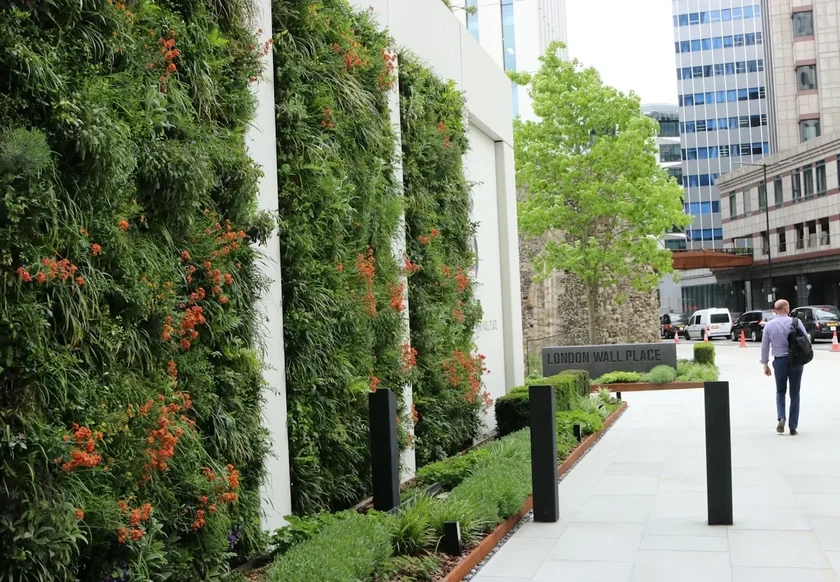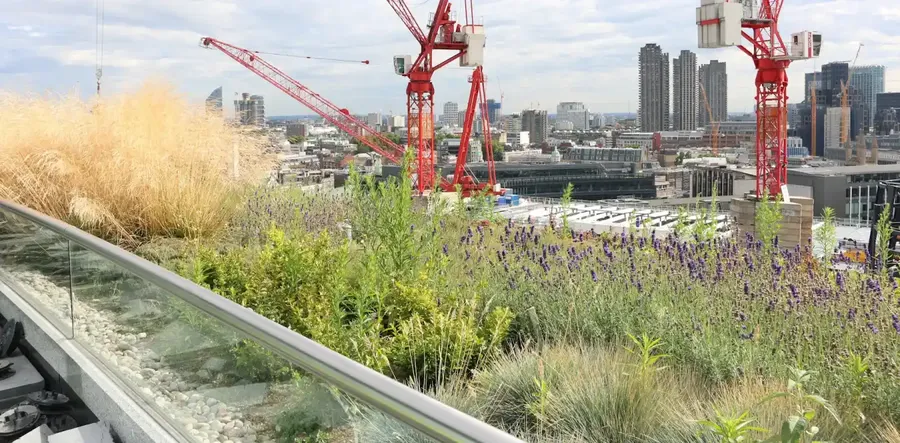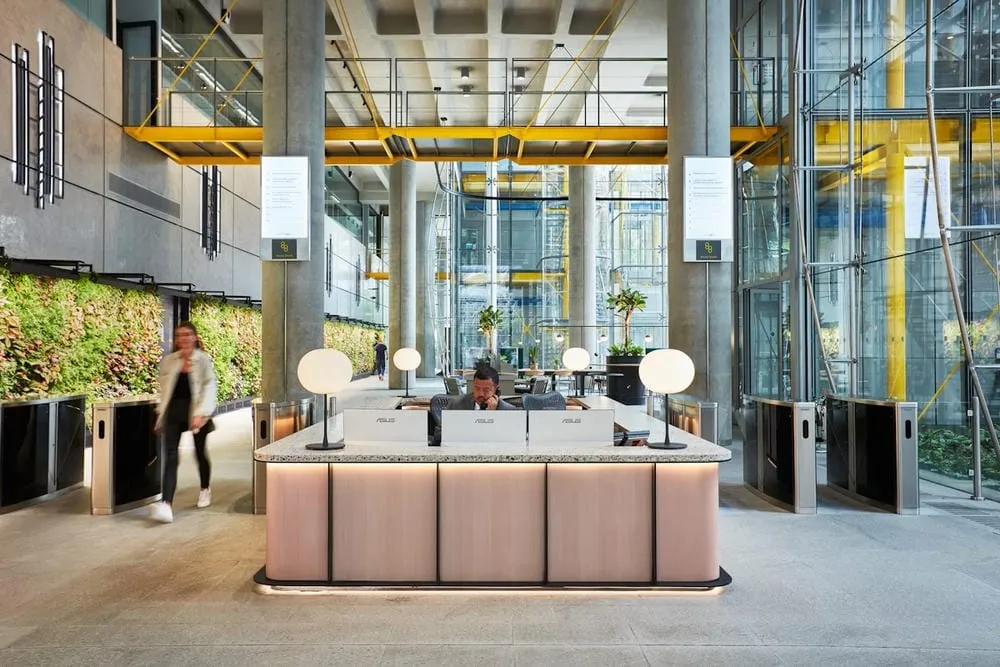Understanding living wall fire regulations

Updated October 2025 to reflect current guidance and Viritopia’s latest testing information.
Balancing sustainability, planning and safety
Designing with nature brings both opportunity and responsibility. As cities set higher expectations for biodiversity, urban greening and sustainable design, it is equally important to ensure that every system performs safely. Fire safety in green infrastructure and particularly in living facades, is an essential part of that balance.
At Viritopia, safety is our highest priority. We work closely with fire consultants, suppliers and testing partners to design living wall systems that meet both environmental and regulatory goals, helping clients ensure sustainability, planning and safety requirements are met harmoniously.

How living wall materials are classified
External wall systems and attachments are tested under the European fire classification system, BS EN 13501-1. This provides a consistent framework for assessing how materials respond to fire based on three factors: combustibility, smoke production and flaming droplets.
A typical classification looks like this: A1-s1, d0.
- Class A materials are non-combustible
- Class B materials have limited combustibility
- Class C materials are of medium combustibility
The “s” rating measures smoke production (s1 = low, s3 = high), and the “d” rating measures flaming droplets (d0 = none, d2 = quite a lot).
Understanding these ratings helps designers make informed decisions and ensure that each element of a façade performs as expected in the event of fire.
Fire testing and classification
Our Viritopia Living Wall System (formerly ANS Global) has been tested by Warringtonfire, who issued an ad-hoc fire classification of B-s2, d0.
This result was derived using the principles of EN 13501-1 but is not UKAS accredited and should be treated as indicative only. The full report is available on request.
What is an ad-hoc fire test?
At present, there is no standardised method for testing living walls under BS EN 13501-1. Because living walls combine organic (plants and growing media) and non-organic elements, traditional cladding test methods cannot be applied directly.
To achieve a meaningful assessment, Warringtonfire adapted the existing test method to suit the nature of a living wall system and to reflect how it performs under real-life conditions. This adaptation, described as “ad-hoc” enabled a realistic evaluation of the system’s fire performance within a controlled setting.
Understanding the results
No living wall system can achieve a Class A rating because plants are organic materials and will always be combustible to some degree. The result of B-s2, d0 represents a limited combustibility classification and demonstrates that, with appropriate design and maintenance, living walls can be safely integrated into many building types in line with Regulation B4 of the UK Building Regulations, relating to external fire spread.
Our R&D and compliance teams continue to work with industry experts, suppliers and fire consultants to support the development of formal test methods for living walls, ensuring that safety and sustainability progress together.
This understanding helps guide our continued commitment to improving safety performance and industry collaboration.
Where living walls can be used
The classification required for an external wall depends on building height, use and proximity to boundaries.
In general terms:
- Residential buildings under 11 m in height can typically accommodate living wall systems achieving Class B-s3-d2 or better, depending on distance from neighbouring structures.
- Assembly and recreation buildings (such as schools or retail environments) can often accommodate systems meeting similar classifications when designed to Approved Document B or BS 9999.
- Open-sided car parks must meet Class A1 standards. Living walls can be incorporated where compliant measures are in place, such as using a non-combustible backing board or fixing to concrete or steel structures with sufficient fire resistance.
- For all other buildings if the external wall is located less than 1000mm from another building, regardless of height, the surface spread of flame on the external walls surface should achieve Class B-s3-d2 or better.
For detailed design and compliance decisions, a qualified fire consultant should always be consulted. You can also refer to our Living Wall Fire Strategy document for further guidance.

Designing for safety: How we limit fire risk
Our living wall systems are engineered to minimise risk through a combination of thoughtful design and ongoing care.

1. Plant selection
At design stage, we select plant species with reduced flammability potential, typically evergreen varieties with limited leaf drop and low resin content. This helps reduce the build-up of dry, combustible material over time.
2. Irrigation
Maintaining consistent moisture levels significantly limits combustibility. Our automated irrigation systems distribute water evenly throughout the wall, supporting both plant health and fire performance.
3. Maintenance
A well-maintained living wall is a safe living wall. Our maintenance teams prune, clean and monitor systems regularly to ensure healthy growth and remove dry or dead material. Maintenance contracts are recommended as part of every installation to keep walls performing safely and sustainably.
Ongoing development and transparency
Fire safety in green infrastructure is an evolving field. At Viritopia, we continue to collaborate with independent fire consultants, testing bodies and industry peers to help shape better, evidence-based standards.
Our goal is to make safety integral to every design decision: transparent, tested and continuously improved.
For more information or to request a copy of our fire test report, please contact us at enquiries@viritopia.com.
Disclaimer
Our Viritopia Living Wall System has been tested by Warringtonfire, who issued an ad-hoc fire classification of B-s2, d0. This result was derived using the principles of EN 13501-1 but is not UKAS accredited and should be treated as indicative only. The full report is available on request.
This article is intended as general information only and does not constitute professional fire safety advice. Always consult a qualified fire consultant for project-specific guidance.
Explore more insights
Discover the latest in green infrastructure

Vanguard Logistics Park (Longmore) Featured in RIBA Commercial Directory 2025

Green Roof Advantages & Disadvantages

Design with meaning: How office living walls reflect your brand

